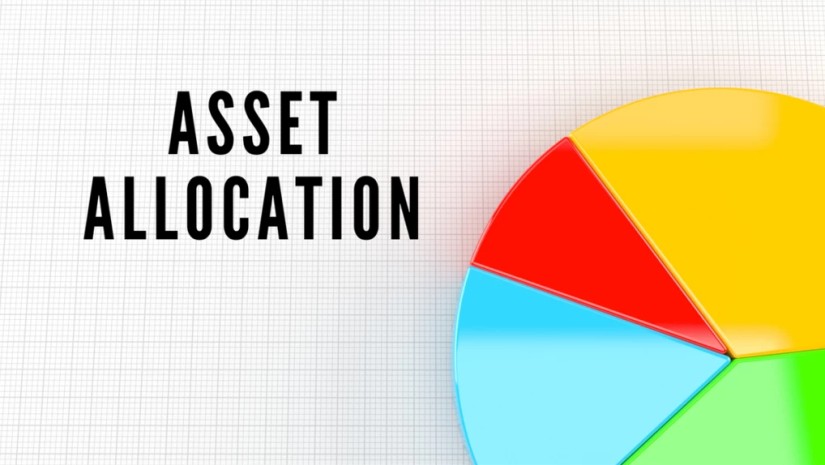Having too little money in life can be a problem, too much money can also be a burden or problem but this can be fixed by conscientious asset allocation. An allocation to rare earth or critical materials should be part of strategic asset allocation in a globally diversified portfolio.
(REEs) in global portfolios might still be underrepresented in many investors’ portfolios but like bitcoin and crypto It could offer attractive long-term returns and can create better investment portfolios. Demand for minerals such as lithium and graphite used in EV batteries could increase as much as 4,000% over the coming few decades.
Kazakhstan is an important country with regards to REE rare earth elements and its domestic stock market so far in USD terms returns is the 6th best performing stock market globally.
Reducing dependence on petrol-burning vehicles and adopting low-carbon technologies to power tomorrows and Gen AI economy are trends accelerating across the globe. Certain countries and companies will benefit and will be able to create attractive returns for investors.
As the world fractures into a multipolar state, there is a big push domestically to revive America’s metals and mining industry and reduce reliance on China and Russia. US reliance on import critical minerals has reached a 30-year high, and investment in the industry is near its lowest point in decades. The US permitting reform and other government incentives will likely act as a tailwind for the domestic mining industry through encouraging the development and helping mitigate the associated risks of building new mine supply.
Rare earth or critical materials investments deserve a place in a globally well diversified portfolio and could offer attractive returns and better portfolios. Geopolitics and ESG and climate change will become more important and will impact investment portfolios and capital market returns.
Supply chain concerns and REE critical role in technology are the two main drivers.
The US is heavily reliant on China for imported critical minerals, with 50% of domestic consumption depending on imports for 43 of 50 critical minerals.
China's dominance in rare earth metals poses a national security threat, and the US faces a multi-decade decline in investment in its domestic mining and exploration industry.
The US government is incentivizing domestic mining and separation sectors to boost domestic supply chains and reduce reliance on China.
REEs are essential components in various high-tech devices and industries, including smartphones, electric vehicles, renewable energy systems, and defence technologies. They have unique properties that make them indispensable for manufacturing these products.
China has historically dominated the production of REEs, accounting for a significant portion of the global supply. This dominance has raised concerns about supply chain security and vulnerability to geopolitical tensions. Investing in REEs outside of China can diversify the supply chain and mitigate such risks.
Historically, China has been the dominant player in the REE market, accounting for a significant portion of both production and reserves. The country's large-scale mining operations and relatively low production costs have given it a strong position in the global market.
Russia: Russia has considerable reserves of REEs, but its production has been limited compared to other major players. However, the country has been exploring opportunities to increase its production and establish itself as a more significant player in the market.
United States: The United States has significant reserves of REEs, but it has been heavily reliant on imports, particularly from China. In recent years, there has been growing interest in developing domestic REE production to reduce dependence on foreign sources.
Canada: Canada has significant REE deposits, particularly in northern regions like Quebec and the Northwest Territories. While production levels have historically been lower than some other countries, there has been increasing interest in developing Canadian REE projects.
Other countries with notable REE reserves or production include Kazakhstan, Brazil, India, South Africa, and several countries in Southeast Asia.
REE route to market
In many investment decisions the so-called route to market is important, similar to when you have money in any bank, money in which currency and in which bank in which country and at which interest rate or profit rate or no rate if an Islamic investor., are important questions.
For strategic asset allocation an allocation to a REE fund or ETF represents an easy route to market, if an investor has knowledge and conviction single stock ideas as a tactical asset allocation decision often can complement the portfolio construction discussion & process.
Several rare earth elements (REE) funds or exchange-traded funds (ETFs) available globally, though the number can change due to market dynamics, new fund launches, or closures
The Wisdom tree energy transition metals and rare earth miners (RARE LN ) UCITS ETF is an opened UCITS compliant ETF incorporated in Ireland under EU law.
VanEck Vectors Rare Earth/Strategic Metals ETF (REMX): This ETF seeks to replicate the performance of the MVIS Global Rare Earth/Strategic Metals Index, which tracks companies involved in producing, refining, and recycling rare earth and strategic metals.
Lynas Rare Earths Limited (LYC): While not a fund or ETF, Lynas Rare Earths Limited is a company listed on the Australian Securities Exchange (ASX) that operates one of the largest rare earth mines and processing facilities outside of China. Investors interested in REEs might consider investing directly in companies like Lynas.
iShares MSCI Global Metals & Mining Producers ETF (PICK): While not exclusively focused on REEs, this ETF provides exposure to companies involved in the production of various metals and minerals, including rare earth elements.
U.S. Global Investors Global Resources Fund (PSPFX): This mutual fund invests in a variety of natural resources, including metals and mining companies that may have exposure to rare earth elements.
China Minmetals Rare Earth Co., Ltd. (600111.SS): This is a Chinese company listed on the Shanghai Stock Exchange that is involved in the exploration, mining, and processing of rare earth elements.
The availability of REE-focused funds or ETFs may vary depending on factors such as region, market demand, and investor interest. It's essential to conduct thorough research and consult with a financial advisor before investing in any specific fund or ETF to understand its objectives, holdings, and risks. Additionally, new funds or ETFs may emerge , so it's important to check latest information from financial institutions and market data providers.
It is of paramount importance to note that investing in REEs can be speculative and risky. The underlying market for these elements can be volatile, influenced by factors such as changes in technology, geopolitical tensions, and regulatory policies. Additionally, the success of REE investments depends on factors like the development of new technologies, mining and extraction advancements, and global economic trends. As with any investment, thorough research and consideration of the associated risks are essential.
Determining the appropriate portfolio weighting for rare earth elements (REEs) in a balanced portfolio depends on various factors, including your investment goals, risk tolerance, time horizon, and overall investment strategy. REEs can be considered a niche or specialized sector within the broader commodities market, so their inclusion in a portfolio should be carefully evaluated.
Rainer Michael Preiss, Partner & Portfolio Strategist at Das Family Office in Singapore
















